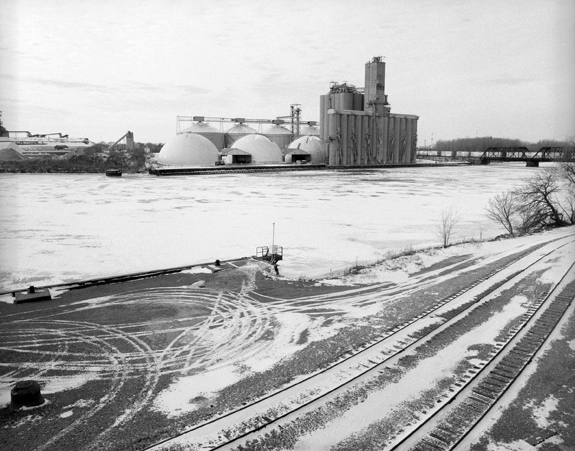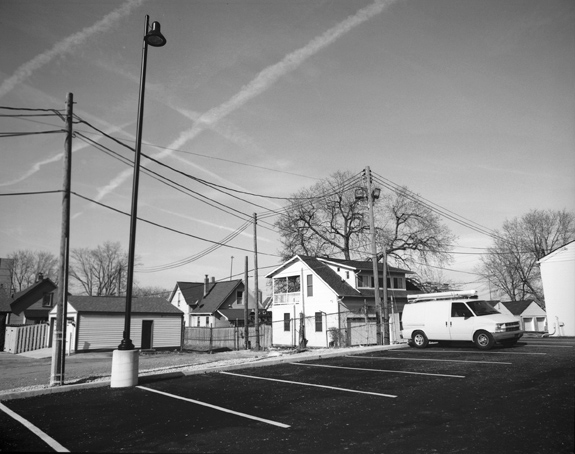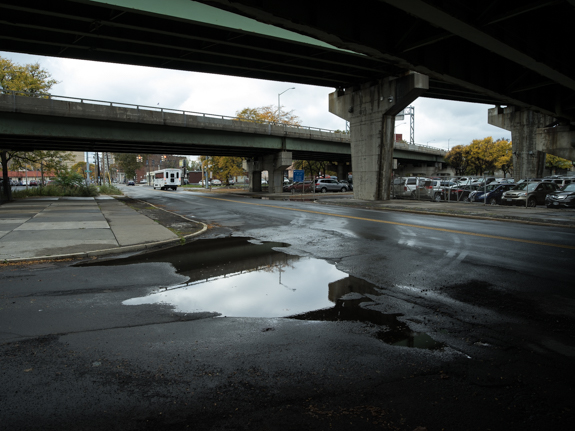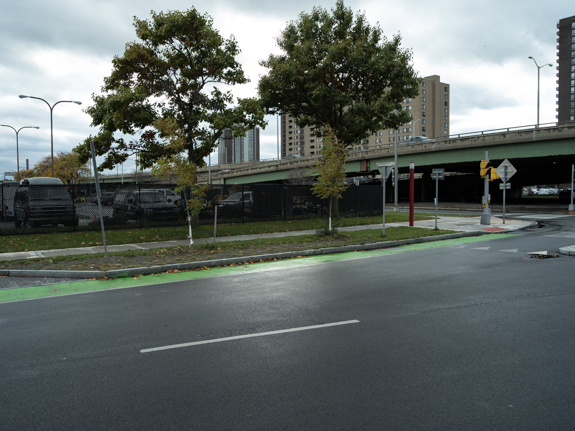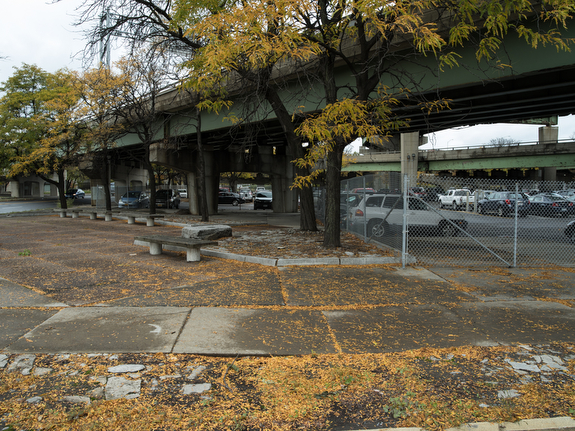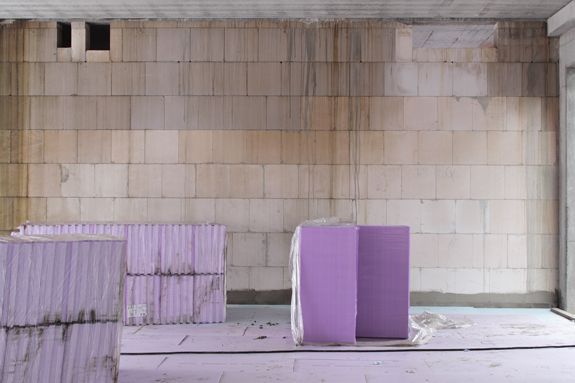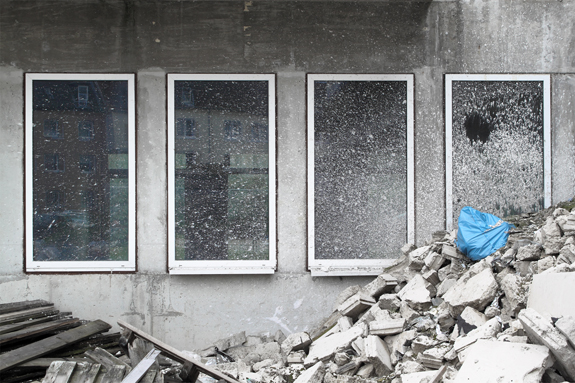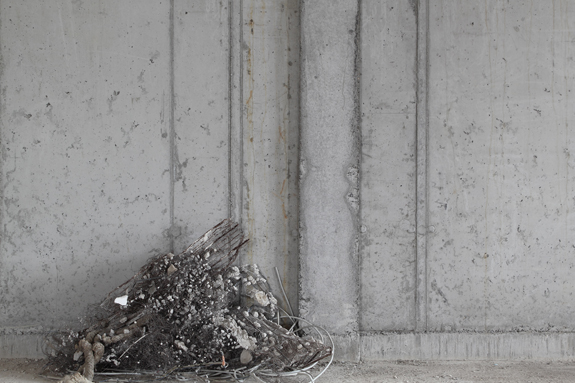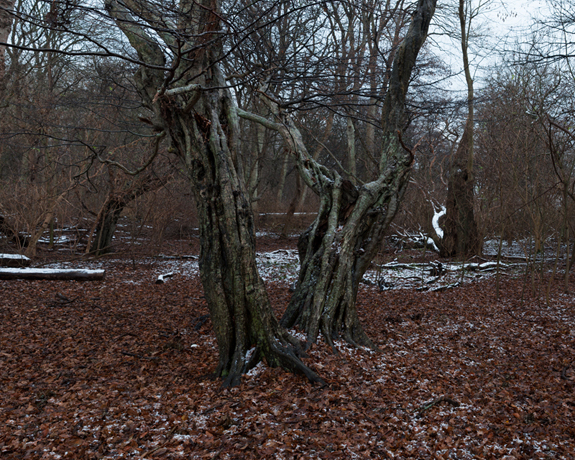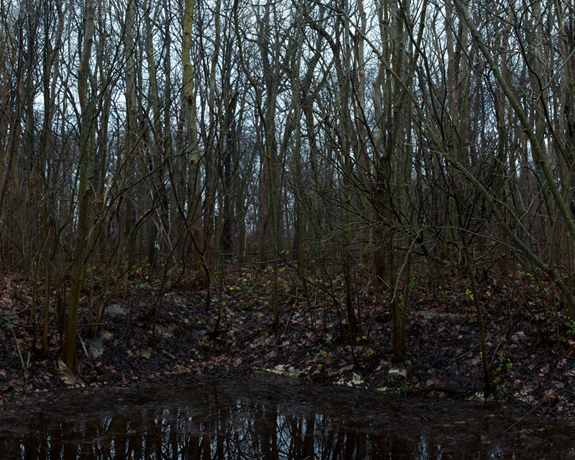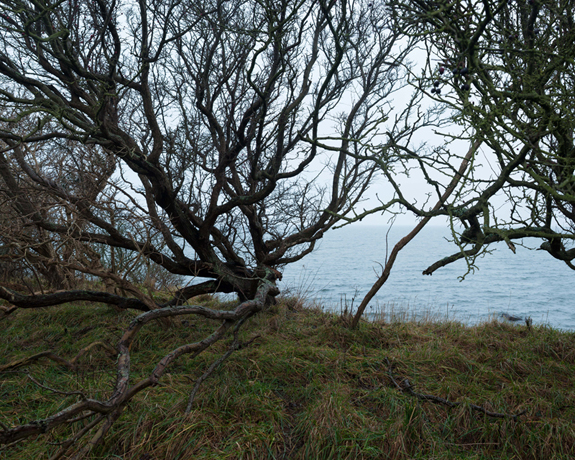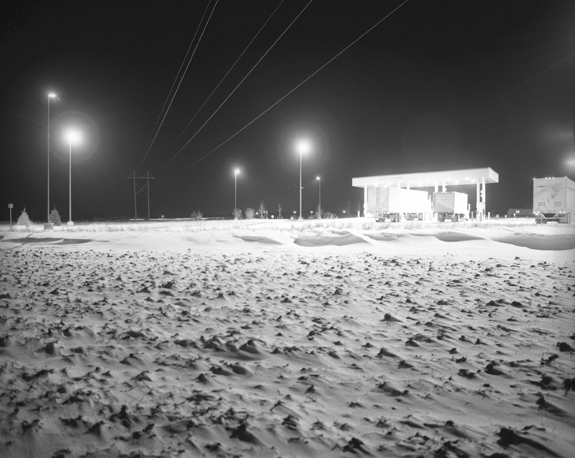
When I was younger, I worked overly-complicated projects. My thesis dealt with chaos theory and was criticized as being a mathematical Waiting for Godot. Now I look at simpler things. I am inspired by color field painters, and surrealists as much as landscape photos and paintings. I’ve had a lot of trouble sleeping and my dreams and reality are still separate but by a lesser degree than they used to be. I only develop film about once a month and sometimes I see negatives I have only vague memories of shooting and there’s almost no difference between the memory of making the picture and a dream. To me it’s more about the feel of the shapes and the forms than what the actual content is. I think the pictures are uniquely Midwestern but that is by coincidence not intention. When I’m driving around the suburbs of Toledo, Ohio I see a lot of construction. It’s hard to pinpoint exactly how but for me the construction sites have something to do with the sense of isolation of the suburbs, the idea that they are in a constant state of expansion is for me disheartening.
— John Walz, Toledo, Ohio
